Indian businesses are rapidly shifting from traditional phone lines to modern VoIP and cloud telephony solutions. In fact, a recent report by ResearchAndMarkets estimates that India’s cloud telephony market will grow at a CAGR of 17.2% from 2023 to 2028, driven largely by increasing demand for flexible, scalable communication solutions. Small and medium-sized enterprises, large corporates, and call centers are all seeking ways to reduce costs, enhance reliability, and simplify their communication infrastructure.
SIP trunking plays a central role in this transformation. By connecting existing PBX systems to the internet, SIP trunks replace costly ISDN or PSTN lines with a digital solution that supports high-quality voice, video, and unified communications. Businesses can scale capacity on demand, integrate with CRMs and cloud platforms, and maintain seamless connectivity across multiple offices.
This article dives into the top SIP trunking providers in India, comparing features, pricing, reliability, and real-world performance. You’ll discover which providers deliver the best value, how they fit different business needs, and why DIDlogic emerges as the leading choice for Indian companies seeking a robust, flexible telephony solution. By the end, you’ll have the insights needed to make a confident, informed decision for your organization.
What Is SIP Trunking and Why It Matters in India
SIP trunking is a method that lets businesses route voice, video, and messaging over the internet rather than traditional phone lines. It essentially replaces ISDN or PSTN connections with a digital link, connecting on-premise or cloud-based PBX systems to the global telephone network.
For Indian businesses, SIP trunks offer a flexible and cost-effective alternative to legacy telecom infrastructure. Traditional ISDN lines require physical circuits and fixed channels, often limiting scalability. In contrast, SIP trunks let companies add or remove channels instantly to match call volume. They also reduce the cost of domestic and international calls, while enabling advanced features like call analytics, unified communications, and CRM integration.
Adoption is accelerating in India. According to a 2024 Frost & Sullivan report, over 40% of medium and large enterprises in India have adopted VoIP or SIP trunking solutions, with adoption expected to reach 60% by 2027 as companies modernize their communication networks. Businesses in metros and Tier-2 cities increasingly favor SIP trunks for their ability to support remote work and multi-office setups without significant infrastructure investment.
How SIP Trunks Work With Business Phone Systems
SIP trunks work by creating a digital pathway between a business’s PBX system and the internet. When a call is made, the PBX converts the voice into data packets, which travel over the internet to the recipient. Incoming calls follow the same path in reverse. This setup removes the need for traditional copper lines and allows a single internet connection to handle multiple concurrent calls efficiently.
SIP trunks are compatible with widely used PBX platforms, including Asterisk, 3CX, and cloud-based systems. This compatibility ensures businesses can retain existing phone infrastructure while transitioning to a more modern, internet-based telephony system. It also allows integration with CRMs, unified communications platforms, and call centers, making business communication seamless and centralized.
Benefits of SIP Trunking for Indian Businesses
SIP trunking transforms business communication by delivering cost efficiency, flexibility, and seamless integration. Companies in India increasingly rely on SIP trunks to manage growing call volumes, support multiple locations, and integrate with digital workflows.
Cost Savings and Affordability
SIP trunks dramatically reduce both domestic and international calling costs. Domestic calls over SIP can cost as low as ₹0.30–₹0.50 per minute, compared to ₹1.50–₹2.50 per minute on traditional PSTN lines. International calls see even greater savings, often up to 70% lower than legacy telecom rates.
For small and medium-sized businesses (SMBs), monthly SIP trunk plans typically start at ₹2,500–₹5,000 for 2–5 channels, while larger enterprises may spend ₹25,000–₹50,000 per month for 20–50 channels, depending on call volume and features. These savings can be reinvested in expanding operations, upgrading IT infrastructure, or funding remote work capabilities.
Scalability and Flexibility
SIP trunks offer unmatched scalability. Businesses can instantly add or remove channels to match call traffic, avoiding overpaying for unused capacity. Multi-location companies benefit from centralized management, enabling all offices to share a single SIP trunk setup. Startups can deploy SIP in a matter of hours, scaling up as they grow, without needing new physical lines or complex installations.
Reliable Call Quality and Network Coverage
Modern SIP trunk providers in India focus on high-definition voice, low latency, and Quality of Service (QoS) optimization. Leading providers report uptime above 99.95%, ensuring minimal disruptions. HD voice support improves clarity for both domestic and international calls, while advanced routing reduces packet loss and jitter, keeping communication consistent even during peak hours.
Integration with Modern Business Systems
SIP trunks seamlessly integrate with customer relationship management tools, unified communications platforms, and call centers. Popular integrations include Salesforce, Zoho CRM, and Microsoft Teams, enabling click-to-call functionality, automatic call logging, and real-time analytics. Businesses can unify their communication channels, ensuring teams stay connected whether they’re in the office, working remotely, or managing a hybrid workforce.
Factors to Consider When Choosing a SIP Trunk Provider in India
Selecting the right SIP trunk provider can significantly impact business communication quality, cost, and scalability. Evaluating pricing, features, and reliability ensures you choose a solution that fits both current needs and future growth.
Pricing Models
SIP trunk providers offer three main pricing approaches:
- Per-channel pricing: Charges are applied for each concurrent call channel. Ideal for businesses with predictable call volumes. Example: ₹1,500–₹3,000 per channel per month in India.
- Usage-based pricing: Billing depends on actual minutes used, suitable for companies with fluctuating call traffic. Domestic rates often start at ₹0.30–₹0.50 per minute, with international calls at ₹2–₹5 per minute.
- Hybrid pricing: Combines fixed channels with usage-based fees, offering flexibility and cost control.
Watch for hidden costs, including setup fees, maintenance charges, and costs for obtaining Direct Inward Dialing (DID) numbers. These can add 10–20% to total monthly expenses if not carefully reviewed.
Features and Capabilities
Key features directly affect operational efficiency:
- Call routing: Enables intelligent distribution of calls to departments or agents.
- DID numbers: Allows multiple direct lines, supporting branch offices or remote employees.
- International calling: Low-cost global connectivity with reliable voice quality.
- Cloud-ready features: Supports migration to cloud PBX and hybrid setups.
- CRM and call analytics integration: Facilitates tracking, reporting, and improved customer engagement.
Choosing a provider with a comprehensive feature set ensures the solution grows alongside your business and adapts to modern communication needs.
Reliability and Support
Business continuity depends on provider reliability:
- SLA uptime guarantees: Look for providers offering 99.95% or higher uptime.
- Disaster recovery options: Ensure failover systems protect against network outages.
- 24/7 support: Access to a responsive local team in India reduces downtime and resolves technical issues quickly.
A provider that combines high reliability with accessible support ensures uninterrupted communication for enterprises, SMBs, and multi-location operations alike.
#1 Recommended SIP Trunk Provider in India: DIDlogic
DIDlogic stands out as the leading SIP trunk provider for Indian businesses, combining reliable performance with cost-effective, scalable solutions. Its platform integrates seamlessly with on-premise PBX systems like Asterisk and 3CX, as well as cloud-based PBX solutions, allowing businesses to maintain existing infrastructure while moving to internet-based telephony.
Pricing is competitive for both SMBs and enterprises. For SMBs, monthly plans start at ₹2,500 for 2 channels, while enterprises can scale up to 50+ channels at ₹45,000 per month, providing predictable costs without hidden fees. International calling rates remain up to 60% lower than traditional PSTN lines.
DIDlogic prioritizes call quality and network reliability, offering HD voice, low latency, and uptime guarantees above 99.95%. Its network coverage spans all major metro and Tier-2 cities in India, ensuring consistent performance for multi-location offices and remote teams.
Use cases include:
- SMBs: Quick deployment with scalable channels for growing call volumes.
- Enterprises: Centralized management for multiple branches across India.
- Call centers and BPOs: High-volume call handling with intelligent routing and analytics.
- Tech startups: Cloud-ready setup with seamless integration to CRMs and UC platforms.
Customer success metrics highlight measurable improvements: businesses report 30–50% reduction in telecom costs and significant reductions in call drop rates after switching to DIDlogic. Case studies also show enhanced agent productivity in call centers due to improved voice clarity and analytics insights.
Other Top SIP Trunk Providers in India
Provider 2: Airtel Business VoIP
- Key Features: Enterprise-grade call routing, DID numbers, international calling, cloud PBX integration.
- Coverage: Strong nationwide network across metros and Tier-2 cities.
- Ideal Business Type: Large corporates and multi-location enterprises needing reliable domestic and international connectivity.
Provider 3: Tata Communications SIP Trunks
- Pricing Highlights: Higher base cost than most competitors, typically ₹3,500–₹4,500 per channel per month.
- Customer Support: 24/7 support with SLA-backed uptime, including disaster recovery.
- Limitations: Premium pricing may not suit small or mid-sized businesses; setup process can take longer for multi-branch deployments.
Provider 4: BSNL SIP Trunking
- Enterprise Focus: Government and large corporate clients, nationwide reach.
- Global Reach: Limited international calling network compared to private providers.
- Reliability Data: SLA uptime around 99.9%; network redundancy exists but may not match private cloud providers for latency-sensitive operations.
Comparison of the Best SIP Trunk Providers in India
| Provider | Pricing (₹/month) | Features | Coverage | Support | Best For |
| DIDlogic | ₹2,500–₹45,000 (2–50 channels) | HD voice, call routing, DID numbers, CRM/UC integration, international calls | Metro & Tier-2 cities | 24/7 local support, SLA 99.95% | SMBs, enterprises, call centers, startups |
| Airtel Business VoIP | ₹3,000–₹40,000 per channel | Call routing, cloud PBX, international calling, DID numbers | Nationwide, strong metro coverage | 24/7 support | Large corporates, multi-location offices |
| Tata Communications | ₹3,500–₹4,500 per channel | Cloud-ready, disaster recovery, SLA uptime | Metro & Tier-2 cities | 24/7 support, SLA-backed | Enterprise-level clients |
| BSNL SIP Trunking | ₹2,800–₹4,000 per channel | Enterprise focus, basic call routing, domestic calls | Nationwide, some Tier-3 coverage | Limited 24/7 support | Government, large corporates |
Key Differentiators:
- DIDlogic: Best overall for cost efficiency, multi-platform integration, and low-latency HD voice.
- Airtel: Strong domestic network and enterprise-grade features; ideal for large corporates.
- Tata Communications: Focus on disaster recovery and premium enterprise solutions.
- BSNL: Cost-effective for large-scale domestic operations, limited international reach.
How to Set Up SIP Trunking in India
Infrastructure and Requirements
- Internet bandwidth: Plan for 100 kbps–150 kbps per concurrent call to ensure clear voice quality. For high-volume call centers, dedicated bandwidth or QoS-enabled connections are recommended.
- PBX compatibility: Verify that your system supports SIP. Most popular platforms, including Asterisk, 3CX, and cloud PBX solutions, are compatible.
- Cloud vs on-premise: Decide if the business will use on-premise PBX hardware or a cloud-based solution. Cloud PBX reduces upfront costs and simplifies remote access, while on-premise setups offer greater control over security and local infrastructure.
Setup Process
- Register with a provider: Sign up for a SIP trunk plan that matches your required number of channels and expected call volume. Complete KYC and billing setup if required.
- Configure trunks in your PBX: Input the SIP credentials (username, password, server IP) into your PBX interface. Platforms like Asterisk and 3CX provide guided setup wizards.
- Test call quality and QoS: Make test calls for domestic and international numbers. Monitor metrics like jitter, latency, and packet loss to ensure the network maintains high-quality voice performance. Adjust bandwidth allocation or QoS settings if necessary.
SIP Trunking vs Other Communication Solutions in India
SIP vs Traditional Telecom Services in India
SIP trunking offers significant advantages over legacy ISDN and PSTN lines. Traditional telecom requires physical circuits, fixed channels, and higher operational costs. Domestic calls typically cost ₹1.50–₹2.50 per minute, and international calls can exceed ₹10 per minute, depending on the carrier. In contrast, SIP trunks reduce costs by up to 70%, while allowing businesses to scale channels instantly.
Reliability also favors SIP. Modern providers guarantee uptime above 99.95% with QoS optimization and HD voice support, while ISDN lines often face delays in provisioning and limited bandwidth for concurrent calls. Indian businesses increasingly prefer SIP due to its flexibility, cost efficiency, and compatibility with cloud and hybrid communication systems, making legacy systems gradually obsolete.
SIP vs Hosted VoIP and Cloud Services
Hosted VoIP and cloud PBX services provide fully managed solutions with minimal setup, ideal for startups or remote teams. Pros include low maintenance, quick deployment, and integrated UC features. However, they can lack granular control over call routing, custom integrations, and may carry higher per-minute costs for large-scale operations.
SIP trunks, by contrast, allow businesses to retain control of their PBX while leveraging internet-based voice. Hybrid setups, combining SIP trunks with cloud-hosted VoIP, make sense for multi-location businesses or enterprises supporting remote workers. They balance cost, flexibility, and centralized management without compromising call quality.
Industry Applications of SIP Trunking in India
Call Centres and BPOs
High-volume operations benefit from SIP trunks’ scalability and low costs. Businesses can manage hundreds of concurrent calls without adding physical lines. Uptime guarantees above 99.95% ensure uninterrupted operations, while advanced call routing and analytics improve agent productivity. Cost savings from SIP adoption often exceed 30–50% compared to legacy lines.
Enterprises and Corporates
Large organizations with multiple offices can centralize communication through SIP. Branch offices share a single SIP trunk infrastructure, reducing costs and simplifying management. Integration with cloud collaboration tools and UC platforms ensures smooth communication across offices and supports hybrid work environments.
Startups and SMEs
SIP trunks provide affordable, scalable solutions for growing companies. Channels can be added instantly as call volume increases. Cloud-ready deployments allow rapid setup, enabling startups to launch operations quickly without investing heavily in physical telecom infrastructure. This agility supports rapid business expansion and remote team integration.
Future of SIP Trunking in India
Unified communications platforms are becoming central to hybrid work models. SIP trunks enable seamless integration with collaboration tools like Microsoft Teams, Zoho, and Salesforce, supporting voice, video, and messaging across office and remote environments.
Globalization is also accelerating adoption. Indian businesses expanding internationally require reliable, low-cost connectivity for cross-border operations. SIP trunks combined with WebRTC technologies allow real-time voice and video communication directly from browsers, while AI-driven routing ensures calls are directed efficiently, improving productivity.
Regulatory compliance is increasingly important. SIP providers in India are integrating STIR/SHAKEN protocols to prevent call spoofing and improve trust in both domestic and international communications. These innovations position SIP trunking as a future-proof solution for businesses of all sizes.
FAQs
Which SIP trunk providers are officially certified in India?
Providers like DIDlogic, Airtel Business, Tata Communications, and BSNL are certified and compliant with TRAI regulations for commercial SIP trunking services.
How much does a SIP trunk cost in India per channel?
Pricing ranges from ₹2,500–₹5,000 per month for SMBs and ₹25,000–₹50,000 per month for enterprises, depending on channels, call volume, and features.
Can Indian businesses use SIP trunks for international calling?
Yes, SIP trunks support international calls at reduced rates, often up to 70% lower than legacy PSTN lines, with HD voice quality and low latency.
What internet speed is required for SIP trunking in India?
Plan for 100–150 kbps per concurrent call. Businesses with high call volumes should ensure dedicated bandwidth or QoS-enabled connections.
Are SIP trunks reliable in Tier-2 and Tier-3 cities?
Leading providers offer coverage in Tier-2 cities and many Tier-3 locations, with uptime guarantees above 99.95%. Reliability improves with redundant internet connections.
Do SIP trunk providers in India offer toll-free and DID numbers?
Yes. Most providers, including DIDlogic and Airtel, provide DID and toll-free numbers, enabling multi-location accessibility and centralized call management.
Further Reading


